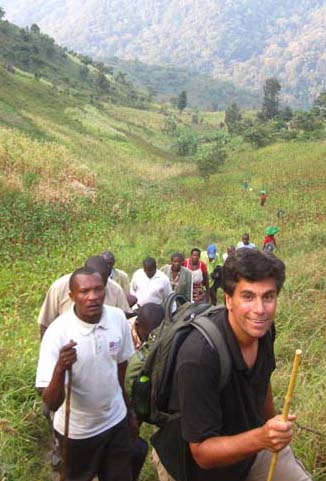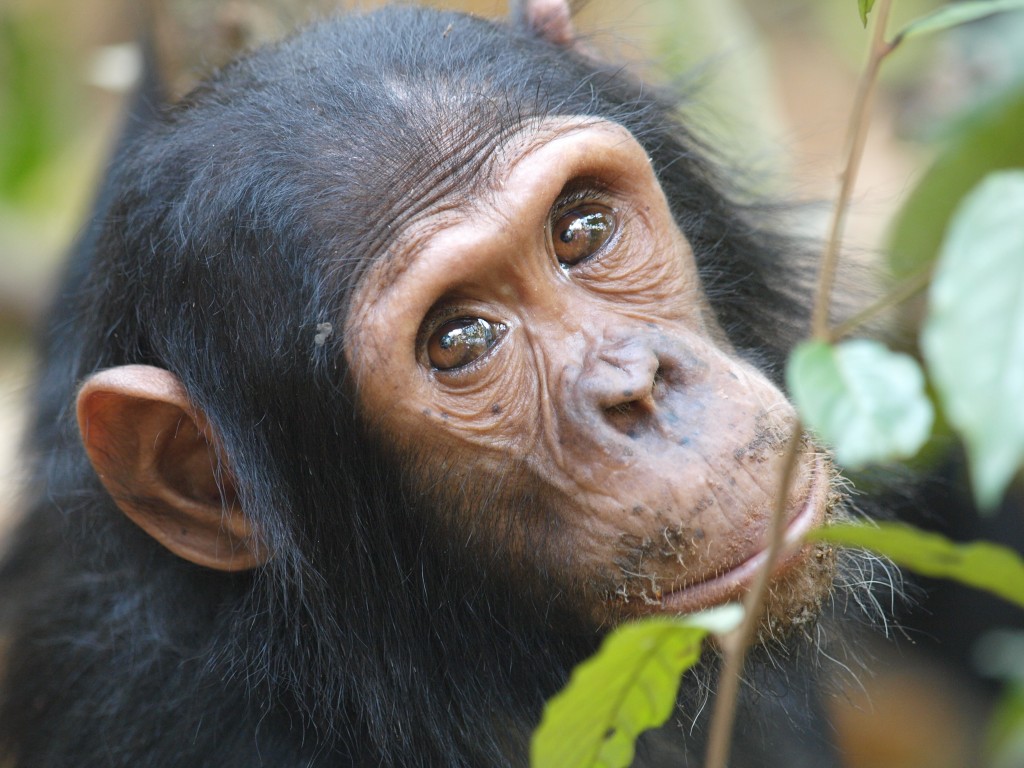“Evolutionary success is not a birthright nor is it a guarantor of survival in perpetuity. Natural selection wrought the living ape species, and like all animals their time on Earth is limited by changing environments, the emergence of competing species, predators, and the like.
Some species cope well in a variety of environments. Such generalists are often abundant and hang around for many millions of years. Other species lack such evolved-in versatility.
Nearly all of the billions of creatures that have ever lived are now extinct, and the vast majority of ape species are just a few more members of the club. We may some day join them.
But until that distant day comes, this Earth is all we have, and the four great apes will be our only extended family. Along with their very distant relatives, dolphins and elephants, they are the most socially complex creatures with whom we share our world.”

[Picture credits: chimpanzee – Craig Stanford; author in Uganda – Erin Moore. Reproduced with thanks.]
Professor Craig Stanford’s 2014 book, Planet without Apes (Harvard University Press), looks at the plight of our four closest relatives – the chimpanzee, bonobo, gorilla, and orang utan – all of which have been driven to the brink of extinction through the destruction of their habitat, poaching, and disease. (2011 estimates put their combined numbers in the wild at 300–400,000.)
Craig’s message in the book is not despairing, but it is stark – urgent, coordinated action is needed if we are to avoid eradicating within decades these highly social animals whose intelligence and culture we have only recently begun to understand. I spoke to Craig on the phone in the spring of 2015.

